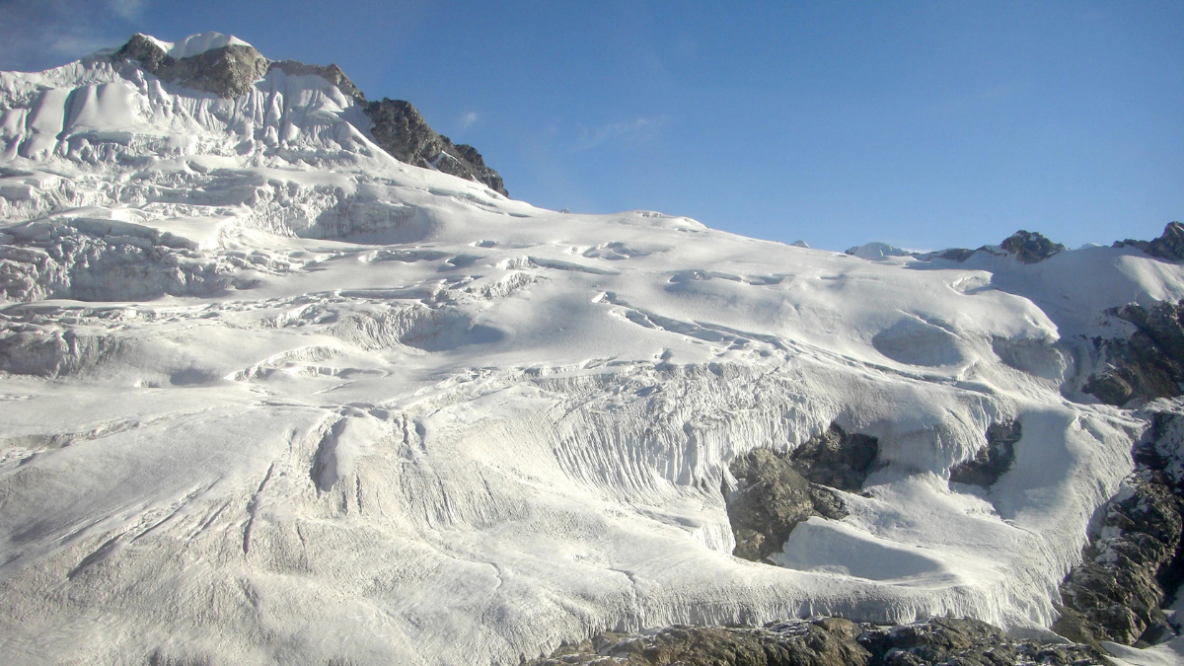- Courses
- GS Full Course 1 Year
- GS Full Course 2 Year
- GS Full Course 3 Year
- GS Full Course Till Selection
- Answer Alpha: Mains 2025 Mentorship
- MEP (Mains Enrichment Programme) Data, Facts
- Essay Target – 150+ Marks
- Online Program
- GS Recorded Course
- Polity
- Geography
- Economy
- Ancient, Medieval and Art & Culture AMAC
- Modern India, Post Independence & World History
- Environment
- Governance
- Science & Technology
- International Relations and Internal Security
- Disaster Management
- Ethics
- NCERT Current Affairs
- Indian Society and Social Issue
- NCERT- Science and Technology
- NCERT - Geography
- NCERT - Ancient History
- NCERT- World History
- NCERT Modern History
- CSAT
- 5 LAYERED ARJUNA Mentorship
- Public Administration Optional
- ABOUT US
- OUR TOPPERS
- TEST SERIES
- FREE STUDY MATERIAL
- VIDEOS
- CONTACT US
Yala Glacier in Himalayas Projected to Vanish by 2040s
Yala Glacier in Himalayas Projected to Vanish by 2040s
10-03-2025

- The Yala Glacier, located in Nepal, has experienced significant retreat, shrinking by 680 meters and reducing in area by 36% between 1974 and 2021.
- This glacier is the only one in the entire Himalayas included in the Global Glacier Casualty List (GGCL), underscoring the accelerating impact of climate change on Himalayan glaciers and the cryosphere.
About the Global Glacier Casualty List (GGCL)
- The GGCL project, launched in 2024 by Rice University, the University of Iceland, the Iceland Glaciological Society, the World Glacier Monitoring Service, and UNESCO, aims to monitor the vanishing glaciers worldwide.
- The cryosphere refers to the frozen portions of the Earth, including snow, ice, and frozen ground.
Glacier Retreat and its Global Impact
Glacier retreat is the process by which glaciers shrink in size and mass, primarily due to melting, evaporation, and other environmental factors.
Several glaciers around the world are disappearing at an alarming rate, including:
- Pico Humboldt Glacier in Venezuela (2024),
- Sarenne Glacier in France (2023),
- Dagu Glacier in China, which is expected to disappear by 2030.
Impact of Melting Glaciers on Ecosystems and Livelihoods
- The retreat of glaciers has far-reaching consequences for both ecosystems and human populations.
- Glaciers and ice sheets contain approximately 70% of the world’s freshwater, which is crucial for ecosystems and the survival of human populations.
- For example, around 240 million people living in the Hindu Kush Himalaya region rely on the cryosphere for their water and livelihood needs.
- Moreover, the accelerated melting of glaciers leads to an increased risk of Glacial Lake Outburst Floods (GLOFs).
- As glaciers melt, unstable glacial lakes form, which, if breached, can cause catastrophic floods, threatening nearby communities and wildlife.
- Additionally, the melting of glaciers diminishes Earth's reflectivity (known as albedo), absorbing more heat and accelerating global warming.
Global and National Initiatives for Glacier Preservation
To address the threat to glaciers, several global and national initiatives have been launched:
- Global Initiatives:
- UN Initiatives: The International Year of Glaciers Preservation (2025) and World Day for Glaciers (March 21) have been designated to raise awareness about glacier conservation.
- Other programs include the Himalayan Adaptation Network by IUCN and the Living Himalayas Initiative by WWF.
- India's Initiatives:
- The National Mission for Sustaining the Himalayan Ecosystem aims to preserve the integrity of the Himalayan glaciers.
- The Indian National Centre for Ocean Information Services (INCOIS) actively monitors glacier-related events and issues GLOF alerts to safeguard vulnerable regions.
- India's missions to the Arctic and Antarctic, such as IndARC (2014), help in studying polar regions and understanding climate change impacts.
|
International Year of Glaciers’ Preservation Recently, UN has declared 2025 as the International Year of Glaciers' Preservation.
About International Year of Glaciers' Preservation
|
|
Also Read |
|
| FREE NIOS Books | |



